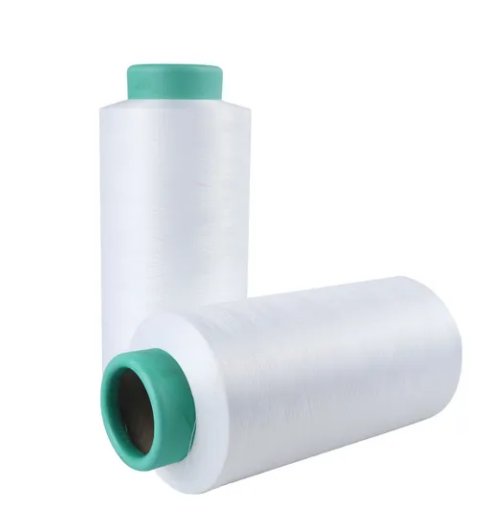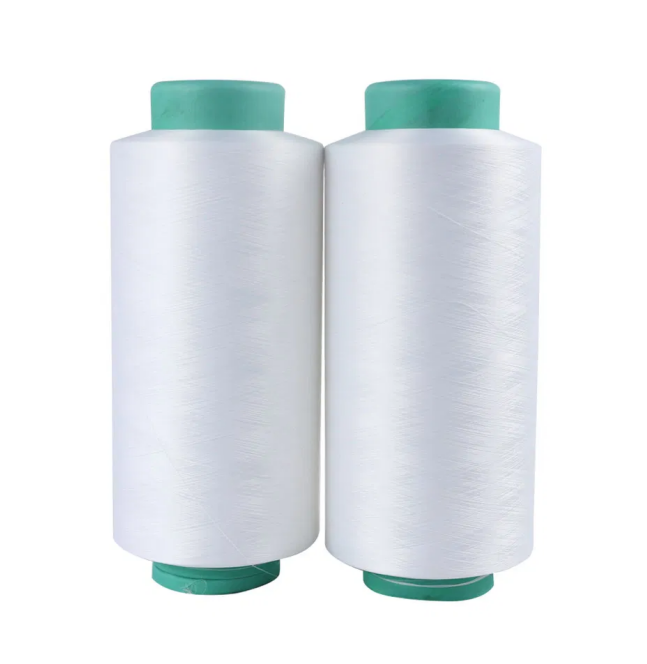
BLOG
Nylon Textured Yarn vs Other Common Textile Fibers
Nylon Textured Yarn remains the practical benchmark Highsun uses to judge modern synthetic fibers for comfort, durability, and processing efficiency. Buyers in apparel, home textiles, luggage, and automotive interiors want fabrics that feel pleasant on skin, endure frequent use, and run reliably on today’s weaving and knitting equipment. This article explains how Draw Textured Yarn (DTY) Nylon 6/6 is made, where it outperforms alternatives, and how Highsun’s disciplined approach helps you convert trials into stable production.

What Makes DTY Nylon 6/6 Different
DTY begins with partially oriented yarn (POY). We stretch the yarn, apply false twist, and heat set the structure. This sequence introduces controlled deformation and locks in a crimped texture. The crimp provides recovery and a fine, fleecy hand feel that suits both weaving and knitting. For teams evaluating DTY Nylon 6/6 for automotive interiors or performance apparel, this balance – resilience with softness – is often the first requirement on the spec sheet.
✅ Features That Matter in Production
• Fine fleeciness and elasticity that support next-to-skin comfort and consistent fit.
• Periodic network points that tighten the yarn body and improve weaving stability.
• Production on Japan TMT and Germany Barmag equipment to keep the texturing uniform.
• Quality monitoring with Uster testers and Oxford MOC NMRS to hold standards tight.
• Advantages that hold up in use: soft, smooth, gentle touch; adhesive shaping; washability; wear resistance.
At Highsun, we prioritize a stable crimp profile, reliable elongation, and clean packages. That focus helps reduce stoppages and supports higher running speeds without trading away fabric quality. The result is yarn that behaves predictably during warping, weaving, and knitting – and keeps your downstream windows wide.
Nylon Textured Yarn vs Other Synthetic Yarn Types
1) Comfort, Elasticity, and Fabric Feel
When developers compare Nylon Textured Yarn to other synthetic yarn types, three questions usually lead the discussion: how does the fabric feel, how long will it last, and how will it behave in production? DTY Nylon 6/6 is known for a plush, soft touch with built-in resilience. The crimped structure enables stretch and recovery without a scratchy surface. That profile helps resolve a common trade-off: preserving hand feel while improving wear life. It is a practical choice for apparel worn close to the skin, home textiles that must stay inviting after repeated washing, and luggage fabrics that see daily friction.
In projects where a crisp handle with limited stretch is the top priority, another synthetic yarn type may be sufficient. But in programs where comfort must pair with strength, Nylon Textured Yarn delivers a middle ground that marketing, technical, and operations teams can all support.
2) Processing on Weaving and Knitting Lines
Periodic network points increase yarn cohesion and help fabrics hold together during formation. In weaving, that cohesion supports smoother running and stable construction. In knitting, the elastic crimp promotes even loops and a soft bulk without sacrificing stability. Teams targeting higher machine utilization will appreciate yarn that behaves consistently across lots and machines.
✅ Common use cases where DTY Nylon 6/6 proves its value include:
• Apparel programs that require softness with dependable stretch and recovery.
• Home textiles that need a plush hand yet stand up to washing cycles.
• Automotive interiors that call for shape stability and abrasion resistance.
• Luggage and accessories that benefit from extra strength without a harsh touch.
For sourcing teams searching for a draw textured yarn supplier for home textile or bag programs, the combination of comfort, durability, and process stability often becomes the deciding factor when comparing Nylon Textured Yarn with other synthetic yarn types.

How Highsun Reduces Risk and Speeds Commercialization
1) Testing, Equipment, and Quality Discipline
Performance must be proven beyond the production line. Highsun aligns on recognized methods so fabric makers can test and validate with confidence. For down-proof evaluation, we reference GB/T 12705.1-2009 Textile – Methods of testing down-proof properties of fabrics – Part 2: Tumble test. Under that method, results greater than 15 indicate poor down-proofness. Agreeing on the method and criteria early helps match a DTY specification to your target performance without over-engineering cost into the yarn.
Our manufacturing discipline is practical and measurable. We use Japan TMT and Germany Barmag texturing equipment to safeguard consistency, and we monitor quality with Uster testers and Oxford MOC NMRS. This combination supports steady crimp formation, reliable elongation, and uniform packages. The payoff shows up where it matters: fewer interruptions, predictable throughput, and fabric that meets its design intent.
Highsun also keeps the focus on usability. We work with your team to select DTY parameters that suit weaving or knitting requirements, so you can maintain hand feel while meeting strength and care targets. The aim is straightforward: deliver Nylon Textured Yarn that runs cleanly, supports your styling goals, and helps you meet launch timelines.
2) Work With Highsun
Your market expects short development cycles and dependable supply. We support both by clarifying end use, gram weight, and target hand at the outset, then recommending DTY Nylon 6/6 options that balance elasticity, fleeciness, and durability. Our role is to help you move from lab samples to repeatable production with confidence.
Call-to-Action
Ready to compare Nylon Textured Yarn with your current alternatives? Contact Highsun for swatches, DTY Nylon 6/6 specifications, and trial cones. We’ll validate feel, processing, and cost on your equipment, then scale what works – so your next fabric line delivers the comfort, durability, and productivity your customers expect.
LET'S TALK TOGETHER
Lorem ipsum dolor sit amet, consectetur estor adipi isicing elit, sed do eiusmod tempor este uterre incididui unt ut
